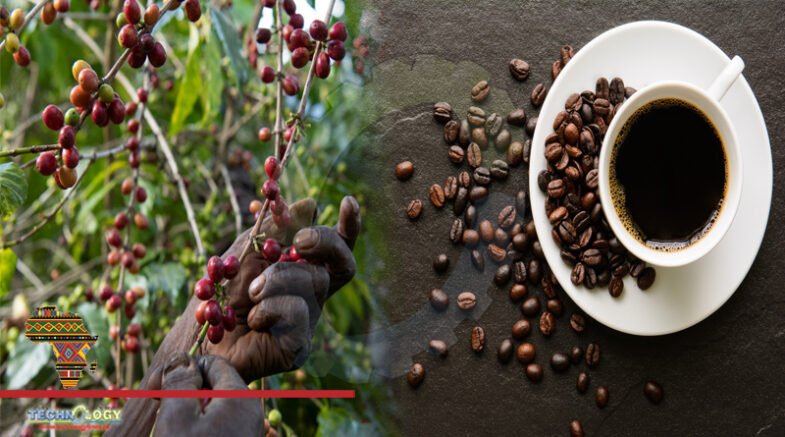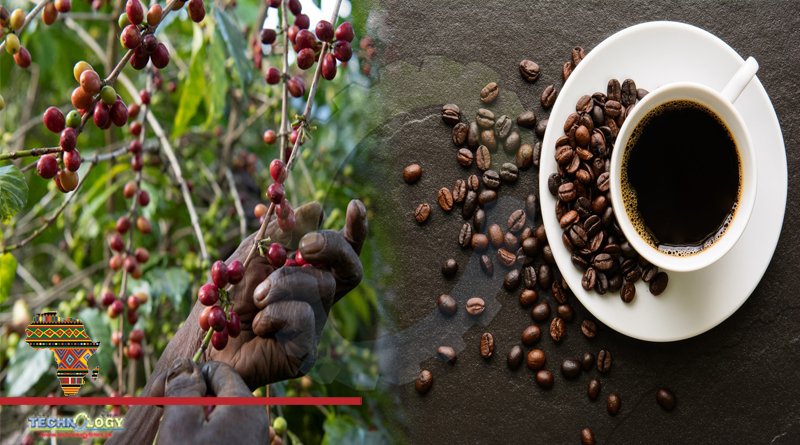Populations of potential drought resistant wild Robusta coffee were identified in the PhD research of Catherine Kiwuka, as potentially useful in the fight against coffee diseases.

by Joshua Kato
The study, in which the Ugandan National Agricultural Research Organisation (NARO) collaborated with the Centre for Crop Systems Analysis of Wageningen University (CSA-WUR) and the Institute de Recherche pour le Développement (IRD), raises hopes for developing drought resistant coffee cultivars.
Populations of potential drought resistant wild Robusta coffee were identified in the PhD research of Catherine Kiwuka, as potentially useful in the fight against coffee diseases.
“Wild relatives of crops continuously dare the environmental pressures and are thus likely sources of resistant attributes that can be used to improve the ability of crops to withstand climate change effects and constitute a critical element for agricultural sustainability,” Kibwika said.
Coffee is Uganda’s leading agriculture earner, with production in 2019/20 reaching 7million bags of 60kgs.
However, the government plan is to export at least 20million bags by 2030.
“Production has been going up but we still have challenges with pests and diseases in some areas. Any research that mitigates these challenges is quite welcome,” says Emmanuel Ilyamulemye, Executive Director, Uganda Coffee Development Authority (UCDA).
Robusta coffee is native to Africa and its natural distribution ranges from Guinea in the west to Uganda in the east and Angola in the south.
Among Coffee species, Robusta has the widest distribution and climatic range, for example, rainfall levels differ by 3-fold across the species’ distribution range and the wild populations in Uganda occur within the driest zone.
Uganda, lying within the driest part of the natural distribution range of Robusta coffee provides the opportunity of finding wild relatives of the cultivated coffee which can be explored for climate and disease resilience.
Wild Robusta coffee naturally thrives in several of Uganda’s tropical rain forests namely: Zoka, Budongo, Itwara, Kibale, Malabigambo, Lutooboka (in Kalangala Island), and Mabira Central forest reserves, and these wild populations occur there-in.
Headed for developing drought-tolerant coffee cultivars in Uganda, collecting missions were conducted to explore the current native distribution of Robusta coffee in Uganda, and to determine the response of these wild Robusta coffee populations to water availability.
But the potentially adapted populations identified to occur in forests that are currently under threat due to habitat modification.
For instance, Zoka forest in Adjumani district of Northern Uganda, where the most valuable coffee plant material occurs, is no more than a 10 km2 forest remnant, and it’s under severe threat due to deforestation.
Furthermore, the study shows that, while the wild populations in the northwestern (Zoka, Budongo, Kibale and Itwara) part of the country are genetically unique, those in the southern central (Mabira, Kalangala and Malabigambo) of the country are already genetically mixed with cultivated material.
Marked variability in drought tolerance among wild populations was observed with those in the northwestern part of Uganda (especially Zoka) tending to be more drought tolerant than those from the southern central forests and the cultivated material.
Furthermore, Zoka central forest reserve is a unique and diverse forest, home to several important crop wild relatives namely: wild rice, four different coffee species; including the two natural parents of Arabica coffee (namely; Coffea canephora and Coffea eugenioides).
Recent research findings from our related study show that the Robusta component which was donated to Arabica coffee is more closely related to the Robusta coffee plant material from Zoka than to any other known in the world.
“This presents an opportunity and challenge for Uganda to secure, explore, and sustainably utilize the available plant diversity to support the national development goals. The conservation of the wild coffee populations in their habitats is of paramount importance since it allows plant material to continue evolving and adapting to changes in their habitats,” Kibwika says.
The availability of adapted plant material is the basis for sustainable agricultural systems and national development, most especially for countries like Uganda, whose economy is heavily reliant on agriculture.
This way agriculture can significantly contribute to the national VISION 2040 which aims to transform the Ugandan society from a peasant to a modern and prosperous society.
